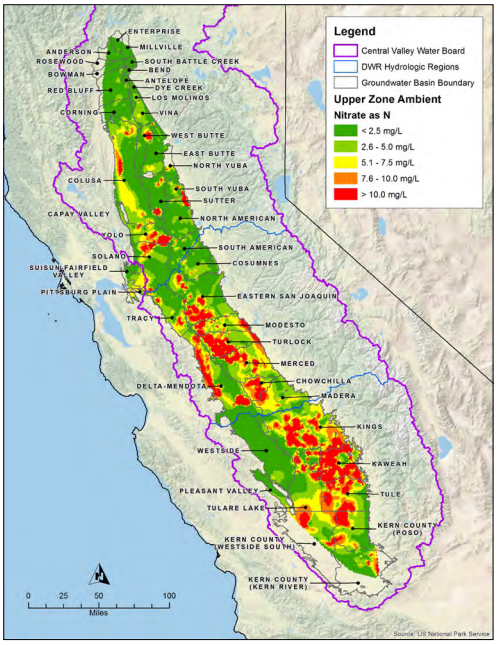This website uses cookies so that we can provide you with the best user experience possible. Cookie information is stored in your browser and performs functions such as recognising you when you return to our website and helping our team to understand which sections of the website you find most interesting and useful.
| Title of Project/Resource | Management Considerations for Protecting Groundwater Quality Under Agricultural Managed Aquifer Recharge |
|---|---|
| Resource Author(s) |
|
| Link to Report/Website | suscon.org |
| Full Description Text Body | Unsustainable groundwater use in California – due in large part to historical over-pumping of aquifer systems, growing reliance on groundwater to meet irrigation and urban water demands, and increasing frequency of drought – affects all water users and threatens agricultural viability into the future, but has disproportionately impacted disadvantaged communities and jeopardizes their access to safe, clean and affordable water. To secure the availability of groundwater for all uses, the state enacted the Sustainable Groundwater Management Act (SGMA) in 2014. Groundwater Sustainability Agencies (GSAs) were charged with developing Groundwater Sustainability Plans (GSPs) to avoid undesirable effects of ongoing groundwater depletion. To meet these goals, many GSPs include managed aquifer recharge (MAR) as one of several key tools to improve groundwater sustainability. Agricultural Managed Aquifer Recharge (AgMAR) is the act of intentionally flooding fallow, dormant, or active cropland when excess surface water is available. AgMAR has the potential to be a cost-effective and high impact form of MAR due to the large acreage of cropland throughout California. As more farmers adopt AgMAR, there is greater urgency to understand the potential water quality risks and benefits associated with recharge. While pesticides and geogenic contaminants such as arsenic pose additional water quality concerns in MAR projects, this paper focuses specifically on water quality considerations for nitrate and salts related to AgMAR activities. Nitrate contamination of groundwater is expected to worsen into the future. However, a combination of improved nutrient management and carefully implemented AgMAR projects could improve groundwater quality faster than under business as usual. Improvements in nitrogen management practices should be prioritized to reduce current and future nitrogen (N) loading to groundwater. Furthermore, relatively clean (nitrate free) recharge water (e.g. high magnitude flood flows) should be used during AgMAR events in order to dilute incoming and existing nitrate in groundwater. AgMAR programs should prioritize sites that can recharge in longer-duration single-flooding events, such as sandier sites, to capitalize on the dilution effect and reduce biologically mediated mineralization of organic N (the conversion of organic N to nitrate). AgMAR alone will not lead to substantive improvement in groundwater quality with respect to nitrate without concomitant improvements in current agronomic nitrogen management and sufficient water for dilution. The development of transparent and easy-to-use tools that estimate the amount of residual nitrate at the end of a growing season, the amount of water needed to dilute nitrate under AgMAR, and time of travel to groundwater will help in the successful implementation of recharge projects to avoid negative water quality externalities. Current nitrogen loading maps and locations of drinking water supply wells can be used by GSAs to get a sense of regional nitrogen loading to groundwater and help in planning and prioritizing efforts on sites to target for AgMAR. |
| Featured Image for Display |  |
| Featured Image Credit | Ambient conditions for nitrate (mg/L as N) in the upper zone of groundwater basins/subbasins in the Central Valley. Source: Figure 3-23 from Final SNMP for Central Valley Water Board Consideration: December 2016 |
| Resource Host Organization, Partner Organizations (Optional) |
|
| Topic Area(s) |
|
Copyright 2022-Present, Flood-MAR and Contributing Authors.

